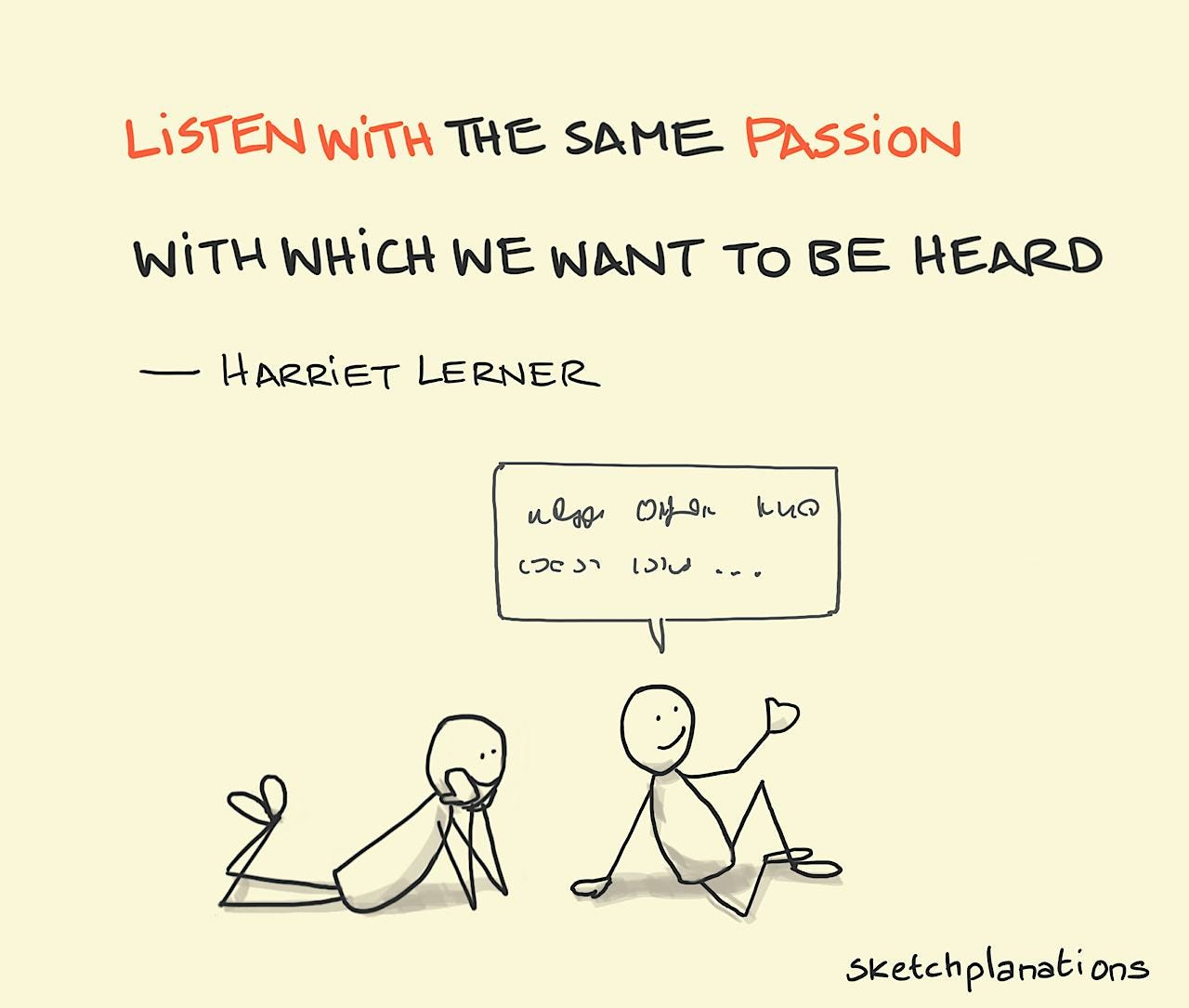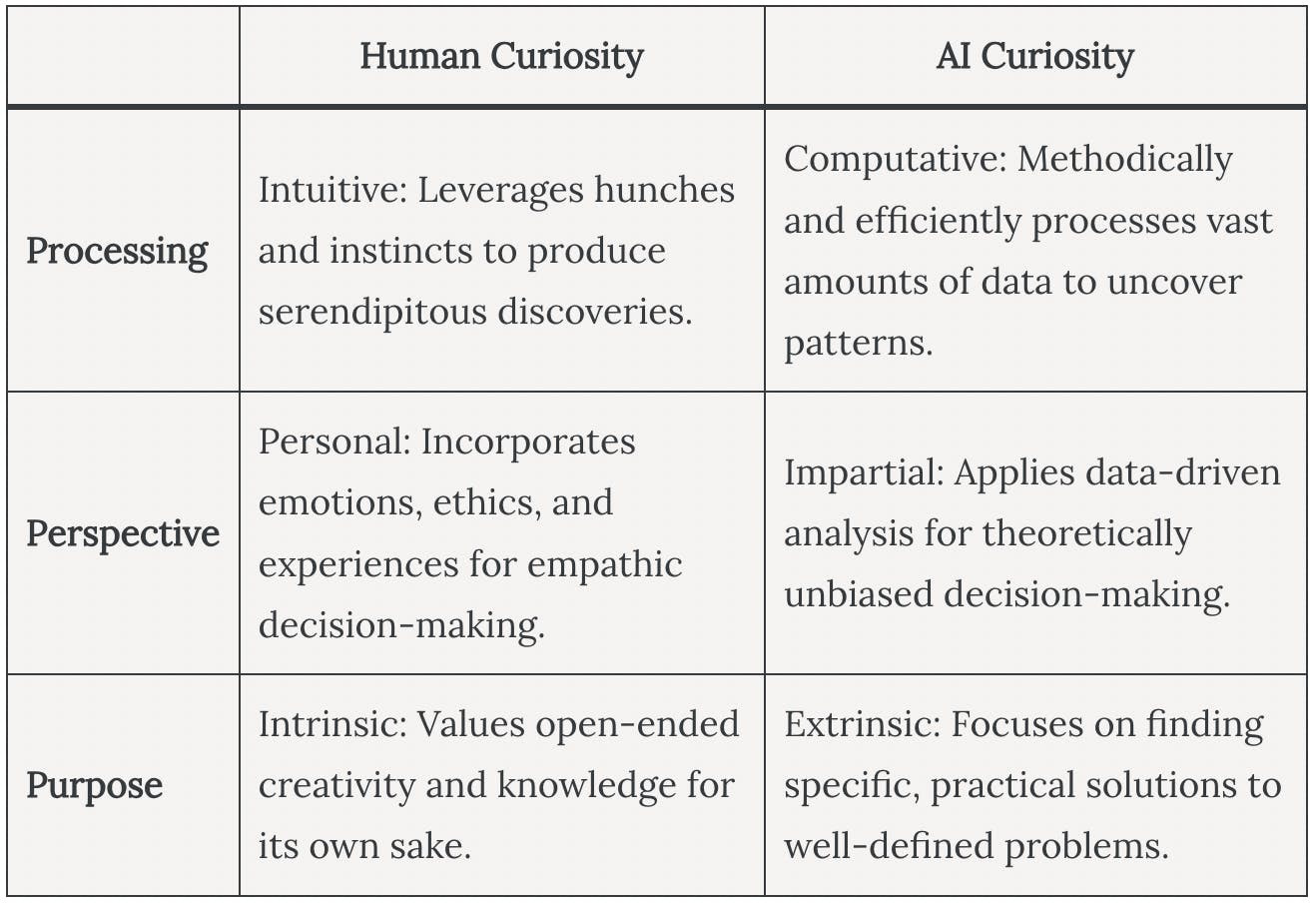Master Listening to Get Heard as a Product Manager
The 4-step listening technique that enables product managers to tune in their product sense to hidden customer needs and market changes before anyone else.
Listening is like salad. At face value, both seem straightforward. I want to listen. I’d like a salad. Then you realize there are six types of lettuce to choose from, 50 variations of speciality ingredients, 27 dressing choices, and 8 protein options. Which translates into a whole lot of different salad combinations. Listening is equally complicated. Do you want to listen to learn, encourage, interrupt, judge, engage, mirror, appreciate, concentrate… and the list goes on.
The way you listen, much like your choice of salad, says a lot about you. It shows when you pay attention and when you don't. Your listening habits reflect your product management style, whether you're leading a team or working with cross-functional stakeholders.
Building on the importance of Product Sense, today we explore the importance of listening—truly tuning into your customers, team, and market trends. You will discover how active listening can help you stay ahead of the curve, ensuring your products consistently meet and exceed customer expectations while encouraging innovation and adaptability within your team.
What is the antidote to interruptive listening
I’ve worked at companies where an executive’s style of listening was focused on interruption. They would constantly interject and challenge each speaker by describing the person’s viewpoint as an “argument”. The exec had come from an extremely competitive environment and carried over the combative state without considering the impact on their new organization.
Tip 1: Next time you are about to interject when someone else is speaking, pause and WAIT. Ask yourself “Why Am I Talking”. Are you going to talk to seek approval, control or to complain? Might more value be provided simply by listening longer?The same principles apply when listening to customers. Recall the last time you spoke with a customer or prospect. Were you seeking to understand the individual’s viewpoint or simply to pick up soundbytes validating your hypothesis? If you find yourself slipping into the second camp, consider a listening approach called NVC, (courtesy of https://psychsafety.co.uk/) which stands for nonviolent communication. It focuses on empathetic listening and honest expression, using the four steps of:
Observations - Observe what is happening and describe the situation without judgement. “I notice … / I hear … / the situation is …”
Feelings - Identify / express your feelings. “Then I feel …”
Needs - Identify the need behind your feeling. “My need is … / because I would like … / I desire … / I need …”
Requests - Make a clear, positive, actionable request. “Would you please … / are you willing to …?”
As a product manager, you can use NVC when talking with or listening to a customer by focusing on understanding their needs and feelings. Then summarize to gain clarification without blaming or passing judgement. Wrap up by inviting collaboration to explore opportunities that benefit the customer and your business.
Tip 2: During your next customer discovery call, practice NVC. Observe, validate the feelings (the why) behind the need and place requests in a manner seeking to understand, not to control.Applying NVC also helps to build trust, open up communication, and build a foundation for a positive working relationship when you’re in an enterprise B2B product space. For example:
As a product manager, you can use NVC to address the gap in product knowledge for enterprise B2B products with the following approach:
Observe Without Judgment: Start by objectively stating your interpretation without blame. "I've noticed that limited customer insight is shared with product when Sales closes or loses a deal."
Express Feelings: Share your feelings about this gap. "I feel concerned and a bit frustrated because this gap makes it harder for product to build value and impact into our products."
Identify Needs: Clearly state the underlying needs. "We need a better understanding of the challenges and feedback from Sales to create more effective products and features."
Make a Request: Ask for specific actions that can help meet the needs. "Can we set up regular meetings to gather customer insights and feedback?” or “Can we brainstorm together way to address the top pain points of our most strategic enterprise B2B customers?"
By using NVC, you approach the problem with empathy and clarity - seeking to transform the current situation. This listening technique makes it easier to collaborate with your team and stakeholders to find effective product solutions. If only choosing salad ingredients was so straightforward.
Ensure your ideas are heard and understood
You have been working on your product sense and sharing ideas gained from customer discovery and conversations with sales and other stakeholders. Despite your best efforts, it feels like you are speaking into a void and no one is listening. Instead it’s a competitive game of “whose idea is best” despite a lot of the suggestions being variations on the same theme you already shared.
Take some comfort in knowing you are not alone. Recent reports indicate “of the 43.3% of respondents who quit a job in the past year, 35.7% left because of a toxic or negative work environment”. In response, when asked what it would take to retain an employee, after increased pay, the highest response was a positive work environment at 25.7%.
If looking for a better culture is not in the cards at this time, here are ways to increase the likelihood your ideas will be heard and understood.
Align your proposal with the company’s strategic priorities, ideal customer segments, and market trends.
Analyze what ideas are currently receiving the green light within your organization as they typically represent a subset of the space identified in step 1.
Adjust aspects of your idea to fit within this "subset" more closely, such as the terminology or target audience.
Ask for feedback to help iterate and refine your idea before seeking to gain wider acceptance.
Remember, despite wishing otherwise, it’s likely our colleagues are seeking to hear their own ideas not new ones. By applying common positioning and framing, you can bring your idea into a range close enough for the ripples or sound waves (choose your own adventure) are picked up and understood. In politics, this notion is called the Overton Window.
The Overton window, put as simply as possible, is the range of acceptable ideas. It’s a political term, named after the man credited with creating it, and is informed by society at large. Politicians follow changes in society, especially ideas that already have widespread public support. Such ideas are “within the window”. Ideas outside the mainstream have a harder time gaining support and are more likely to be seen as radical or unthinkable. The same concept applies to putting your product sense and resulting ideas into action.
Tip 3: Determine what aspects of your company’s strategy stack, customer base and market trends are gaining traction internally. Position your idea in terms which reflect this acceptable window. You’re likely wondering, couldn’t AI just do that for me? Why not cut and paste my existing idea within a well structured prompt - and ta da! Out pops an entirely acceptable approach that will gain me enough listeners and supporters to go into implementation. In the same manner that product sense doesn’t mean just doing what your customer tells you, the same concept applies to using AI.
Ness Labs shared the following chart comparing Human Curiosity in the Age of AI. Part of positioning your idea to be heard is ensuring it connects with the way people - not machines - think. Humans “listen” for different things than AI. Use the following chart to weave more humanity into your proposal.
It is better to have a HOLE than be a ASSHOLE
Ok, you got me. I might not be practicing the Overton Window correctly with this title. It does convey my beliefs that it is better to have a gap (hole) in your organization than to retain an asshole - especially when it comes to the importance of listening.
Part of a leader’s job is to make active listening expected. For example, if a leader does nothing when an individual intentionally disrupts another person, others will follow suit and a bias will develop.
Tip 4: Promote a culture of respect by promptly addressing interruptions and emphasizing the importance of attentive listening during meetings.Coach your leaders and teams to create a space for conversation - which is different than interruption - so they know where the line is drawn.
Disruption: Interruption or disturbance that breaks the flow of the meeting. It can be intentional or unintentional and often halts the current discussion.
Conversation: Interactive and purposeful exchange which involves active listening and responding, encouraging understanding and collaboration
Where to start? The following quote stood out to me as it describes (1) the likely picture the disruptor has in their head and (2) the alternative type of environment you want to foster.
It is all about zero sum thinking. If you think that the size of the pie is fixed, then you need to grab as much of it as you can. But if you are making a pie that can grow and grow and grow, you just take a small slice and let everyone else eat… Don’t be selfish. Be generous. (link)
During a meeting you can turn the tables on a disruptor by asking open ended questions, inviting others to speak, and strategically capturing the disruptor’s input then moving on - while practicing NVC, of course.
Tip 5: Turn interruptions into discussions by posing open-ended questions and encouraging team members to contribute their viewpoints.After the meeting or during a break, take the disruptor aside and have a 1:1. You can lead with “how” and “what” questions, such as the following:
What's working well about how the team relates to each other?
What's not working well?
Any specific situations or examples you can share?
What's your personal role in why things might not be working well?
What happened that led you to feel this way?
What conclusion did your draw from …?
How do you see us moving forward from here?
If it is your manager who is doing the disrupting, in a Zoom you can refocus the energy back to the person your boss interrupted by placing a question or comment into chat. You are not taking the floor away from your manager instead you are providing an opening for the conversation to flow back to the prior speaker.
When in person, I’m a fan of sticky notes. You can write your thought or comment onto a sticky note and place it in front of you. The action will be noticed and can serve as a reminder to revisit the topic or speaker that was cut off.
"It always surprises me when I hear managers speak for the wellbeing of the whole and then see them participate in fostering competition among the parts. The challenge of organizational life is to connect people in common effort. Understanding my interdependence with all others connects me to the whole. And when each is responsible for the learning of the whole, then each shares a deeper sense of purpose with all members. Accepting this challenge demands cooperation and a willingness to acknowledge our connectedness."
- Flawless Consulting
Even though it is your manager, you can rise above the situation and foster a different culture with your direct reports or cross functionally. It’s not easy, as the quote from Flawless Consulting reminds us, but the effort and small changes are worth it for your own wellbeing as well as for your team and colleagues.
I’m off now to teach Lancaster about the power of listening.









